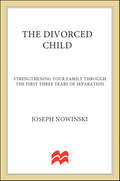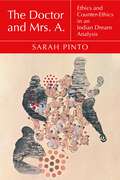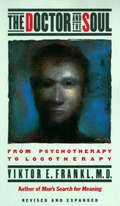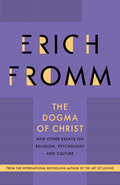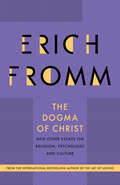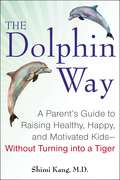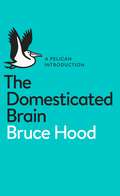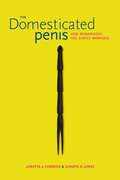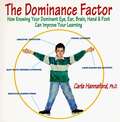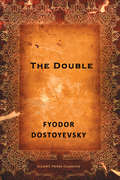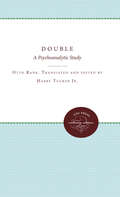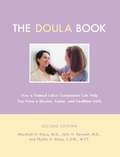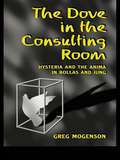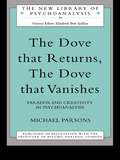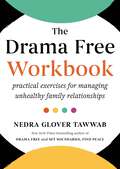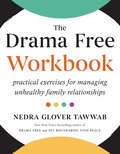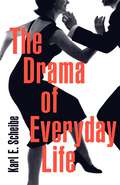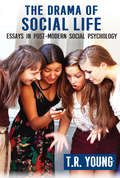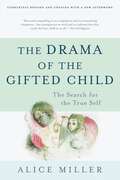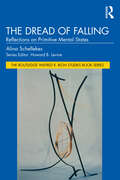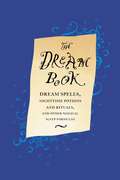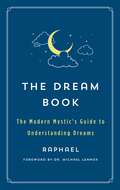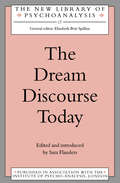- Table View
- List View
The Divorce Remedy: The Proven 7-step Program For Saving Your Marriage
by Michele Weiner DavisMichele Weiner-Davis offers an empowering and encouraging guide for revitalizing marriage and building stronger, more loving bonds. <P><P> Michele Weiner-Davis goes beyond her marriage-saving bestseller, Divorce Busting, with this empowering and encouraging guide for revitalizing marriage and building stronger, more loving bonds. In a down-to-earth style that is free of psychobabble, Weiner-Davis outlines a realistic, solution-oriented seven-step program for managing marital problems, which, when left unchecked, can drain the life out of a relationship. Using revealing anecdotes and in-depth case studies, she illustrates practical ways for marriage partners to <P><P> <br>-avoid the “divorce trap” <br>-identify specific marriage-saving goals <br>-move beyond ineffective, hurtful ways of interacting <br>-become an expert on “doing what works” <br>-overcome infidelity, Internet obsessions, depression, sexual problems, and midlife crises <br>-get your marriage back on track—and keep it there <P><P>Rescue your marriage with the proven techniques of The Divorce Remedy—sound, sensible advice from a renowned relationship expert!
The Divorced Child: Strengthening Your Family through the First 3 Years of Separation
by Joseph NowinskiDivorce is a reality of today's family life, but clinical research has shown that it is possible to mitigate its negative effects on children. Dr. Joseph Nowinski, a family therapist with over 20 years of experience treating families, argues that there is a three-year window in which to acclimate children to the change in family life. Combining case studies with new research, Dr. Nowinski gives parents the information and the tools to work through the transition. Written in a warm and authoritative tone, Nowinski will teach parents to:· Focus on your child's new day-to-day reality· Identify early signs of trouble· Help your child through the separation process and help them develop coping skills that will remain with them through life
The Doctor and Mrs. A.: Ethics and Counter-Ethics in an Indian Dream Analysis (Thinking from Elsewhere)
by Sarah PintoJust before India’s independence, a young Punjabi woman, ill at ease in her marriage and eager for personal and national freedom, sat down with psychiatrist Dev Satya Nand for an experiment in his new method of dream analysis. The published analysis documents a surge of emotion and reflections on sexuality, gender, marriage, ambition, trauma, and art. “Mrs. A.” (as she is known) turned to female figures from Hindu myth to reimagine her social world and its ethical arrangements, envisioning a future beyond marriage, colonial rule, and gendered constraints.This book explores the conversation between Mrs. A. and Satya Nand, its window onto gender and sexuality in late colonial Indian society, and the ways Mrs. A. put ethics in motion, creating alternatives to ideals of belonging, recognition, and consciousness. It finds in Mrs. A.’s musings repertoires for the creative transformation of ideals and explores the possibilities of thinking with a dynamic concept of counter-ethics. An unconventional history of gender and sexuality in late colonialism, this book reminds us that the west did not invent feminism, that psychiatry’s history of innovation and creativity is global, and that ethical thinking does not need to center on western myths or paradigms.
The Doctor and the Soul: From Psychotherapy to Logotherapy (Pelican Ser.)
by Viktor E. FranklEmphasizing spiritual values and the quest for meaning in life in its approach to the neurotic behavior, by the founder of logotherapy. Copyright © Libri GmbH. All rights reserved.
The Dogma of Christ
by Erich FrommThe essays in this fascinating volume examine present-day psychological and cultural problems with the keen insight and humanistic sympathies characteristic of Erich Fromm's work. The Dogma of Christ and Other Essays provides some of the sharpest critical insights into how the contemporary world of human destructiveness and violence can no longer separate religion, psychology and politics. The book brilliantly summarizes Fromm's ideas on how culture and society shape our behavior.
The Dogma of Christ: And Other Essays on Religion, Psychology and Culture (Routledge Classics Ser.)
by Erich Fromm&“Fromm&’s developing thought merits the critical attention of all concerned with the human condition and its future.&” —The Washington Post The essays in this fascinating volume examine present-day psychological and cultural problems with the keen insight and humanistic sympathies characteristic of Erich Fromm&’s work.The Dogma of Christ provides some of the sharpest critical insights into how the contemporary world of human destructiveness and violence can no longer separate religion, psychology, and politics. The book brilliantly summarizes Fromm&’s ideas on how culture and society shape our behavior. &“It&’s the new post-religious theme song. The Fromm exhortations are imaginative and he has a definite audience.&” —Kirkus Reviews &“Of all the psychological theorists who have tried to formulate a system better than Freud&’s to approach problems of contemporary life, no one has been more creative or influential than Erich Fromm. He is the most articulate advocate on the role of social forces in molding our character and on our manner of relating to others. This volume is an expansion of his systematic doctrine.&” —Louis L. Lunsky, MD, Archives of Internal Medicine
The Dolphin Way
by Shimi KangIn this inspiring book, Harvard-trained child and adult psychiatrist and expert in human motivation Dr. Shimi Kang provides a guide to the art and science of inspiring children to develop their own internal drive and a lifelong love of learning. Drawing on the latest neuroscience and behavioral research, Dr. Kang shows why pushy "tiger parents" and permissive "jellyfish parents" actually hinder self-motivation. She proposes a powerful new parenting model: the intelligent, joyful, playful, highly social dolphin. Dolphin parents focus on maintaining balance in their children's lives to gently yet authoritatively guide them toward lasting health, happiness, and success. As the medical director for Child and Youth Mental Health community programs in Vancouver, British Columbia, Dr. Kang has witnessed firsthand the consequences of parental pressure: anxiety disorders, high stress levels, suicides, and addictions. As the mother of three children and as the daughter of immigrant parents who struggled to give their children the "best" in life--Dr. Kang's mother could not read and her father taught her math while they drove around in his taxicab--Dr. Kang argues that often the simplest "benefits" we give our children are the most valuable. By trusting our deepest intuitions about what is best for our kids, we will in turn allow them to develop key dolphin traits to enable them to thrive in an increasingly complex world: adaptability, community-mindedness, creativity, and critical thinking. Life is a journey through ever-changing waters, and dolphin parents know that the most valuable help we can give our children is to assist them in developing their own inner compass. Combining irrefutable science with unforgettable real-life stories, The Dolphin Way walks readers through Dr. Kang's four-part method for cultivating self-motivation. The book makes a powerful case that we are not forced to choose between being permissive or controlling. The third option--the option that will prepare our kids for success in a future that will require adaptability--is the dolphin way.
The Domesticated Brain: A Pelican Introduction (Pelican Books)
by Bruce HoodWhat makes us social animals? Why do we behave the way we do?How does the brain influence our behaviour? The brain may have initially evolved to cope with a threatening world of beasts, limited food and adverse weather, but we now use it to navigate an equally unpredictable social landscape. In The Domesticated Brain, renowned psychologist Bruce Hood explores the relationship between the brain and social behaviour, looking for clues as to origins and operations of the mechanisms that keep us bound together. How do our brains enable us to live together, to raise children, and to learn and pass on information and culture? Combining social psychology with neuroscience, Hood provides an essential introduction to the hidden operations of the brain, and explores what makes us who we are.
The Dominance Factor: How Knowing Your Dominant Eye, Ear, Brain, Hand and Foot Can Improve Your Learning
by Carla HannafordNeuroscientist and educator Dr. Carla Hannaford fascinating frontier (study) of knowledge about ... and its impact on learning and thinking at an ages. Her earlier book, Smart Moves, Why Learning Is Not All In Your Head, has been hailed for its insights into the body's role in learning. Joseph Chilton Pearce calls it "a major work of profound importance to our understanding of child development and education." In The Dominance Factor she explores an area that has long intrigued scientists and educators: the linkages between the side of the body we favor for seeing, hearing, touching, and moving and the way we think, learn, work, play, and relate to others. Your Dominance Profile is actually a key factor in shaping the way you think and act. Carla Hannaford shows why, and reveals how knowing your Profile will help you, and your children, to learn in the way that suits you best, and perform at your highest level. The Dominance Factor clearly explains methods for discovering your Profile that are so simple, non-invasive and easy to learn that even a child can do them. This is a book that parents, teachers, and all of us who need to understand what makes ourselves and others tick, will use and enjoy.
The Double
by Fyodor DostoyevskyAfter an uncomfortable and embarrassing evening at a party, the unsociable Golyadkin meets his double and soon discovers that this more charming and successful version of himself intends to take over his life and drive him to the edge of sanity.
The Double: A Psychoanalytic Study
by Harry Tucker Otto RankAlive, fresh, and stimulating, the theme of The Double comprises the issues of identity, narcissism, and the fear of death--actually the core of human existence. Rank's book is primarily a study of the double as it appeared in striking examples in German, French, Russian, English, and American literature from Goethe to Oscar Wilde.Originally published in 1971.A UNC Press Enduring Edition -- UNC Press Enduring Editions use the latest in digital technology to make available again books from our distinguished backlist that were previously out of print. These editions are published unaltered from the original, and are presented in affordable paperback formats, bringing readers both historical and cultural value.
The Doula Book: How a Trained Labor Companion Can Help You Have a Shorter, Easier, and Healthier Birth
by Marshall H. Klaus John H. Kennell Phyllis H. KlausMore and more parents-to-be all over the world are choosing the comfort and reassuring support of birth with a trained labor companion called a "doula. " This warm, authoritative, and irreplaceable guide completely updates the authors' earlier book, Mothering the Mother, and adds much new and important research. In addition to basic advice on finding and working with a doula, the authors show how a doula reduces the need for cesarean section, shortens the length of labor, decreases the pain medication required, and enhances bonding and breast feeding. The authors, world-renowned authorities on childbirth with combined experience of over 100 years working with laboring women, have made their book indispensable to every woman who wants the healthiest, safest, and most joyful possible birth experience.
The Doula Book: How a Trained Labor Companion Can Help You Have a Shorter, Easier, and Healthier Birth
by Marshall H. Klaus John H. Kennell Phyllis H. KlausMore and more parents-to-be all over the world are choosing the comfort and reassuring support of birth with a trained labor companion called a "doula." This warm, authoritative, and irreplaceable guide completely updates the authors' earlier book, Mothering the Mother, and adds much new and important research. In addition to basic advice on finding and working with a doula, the authors show how a doula reduces the need for cesarean section, shortens the length of labor, decreases the pain medication required, and enhances bonding and breast feeding. The authors, world-renowned authorities on childbirth with combined experience of over 100 years working with laboring women, have made their book indispensable to every woman who wants the healthiest, safest, and most joyful possible birth experience.A Merloyd Lawrence Book
The Dove in the Consulting Room: Hysteria and the Anima in Bollas and Jung
by Greg MogensonPsychoanalysis began as a treatment for hysteria over a century ago, and recently has returned to hysteria as a focus, most notably in the works of Christopher Bollas and Juliet Mitchell. This provocative and original book critically engages with psychoanalysis and in particular the phenomenon of the return of hysteria to analysis, from a Jungian perspective, asking such questions as, what is the purpose of the concept of hysteria in psychoanalysis? What does it say about the concept of the soul, and of the analytical culture? What place does spirituality generally have in psychoanalysis - what place for the dove in the consulting room?Drawing on the works of Jung, Bollas, Hillman and Giegerich, the author provides a rich rejoinder to Bollas's proposed theory of hysteria, and provides a unique Jungian analysis of analysis itself - both Freudian and Jungian. The Dove in the Consulting Room is illuminating reading for the professional analyst and for anyone interested in the spiritual and cultural importance of psychoanalysis and analytical psychology.
The Dove that Returns, The Dove that Vanishes: Paradox and Creativity in Psychoanalysis (The New Library of Psychoanalysis #Vol. 39)
by Michael ParsonsThe nature of psychoanalysis seems contradictory - deeply personal, subjective and intuitive, yet requiring systematic theory and principles of technique. In The Dove that Returns, The Dove that Vanishes, Michael Parsons explores the tension of this paradox. As they respond to it and struggle to sustain creatively, analysts discover their individual identities. The work of outstanding clinicians such as Marion Milner and John Klauber is examined in detail. The reader also encounters oriental martial arts, greek Tragedy, the landscape painting of John Constable, a Winnicottian theory of creativity and a discussion of the significance of play in psychoanalysis. From such varied topics evolves a deepening apprehension of the nature of the clinical experience. Illustrated throughout , The Dove that Returns, The Dove that Vanishes will prove valuable to those in the field of psychoanalysis, and to those in the arts and humanities who are interested in contemporary psychoanalytic thinking.
The Drama Free Workbook: Practical Exercises for Managing Unhealthy Family Relationships
by Nedra Glover TawwabFrom the New York Times bestselling author of DRAMA FREE and SET BOUNDARIES, FIND PEACE, a hands-on resource for understanding and working through dysfunctional family dynamics - and recognizing when to walk awayFamily can be a source of connection, and a source of conflict. In this exercise-filled workbook, licensed therapist and bestselling relationship expert Nedra Glover Tawwab offers powerful insights along with thought-provoking questions to help you unpack what's really going on - and express your needs and expectations going forward. Whether you are coping with a long-term pattern of emotional neglect, addiction, or abuse, or trying to understand a new conflict that's come up with a parent, sibling, or in-law, you will find empowering information and tools to help you manage these complex relationships in a way that offers psychological safety and honors the person you truly are.
The Drama Free Workbook: Practical Exercises for Managing Unhealthy Family Relationships
by Nedra Glover TawwabFrom the New York Times bestselling author of Drama Free and Set Boundaries, Find Peace, a hands-on resource for understanding and working through dysfunctional family dynamics—and recognizing when to walk awayFamily can be a source of connection, and a source of conflict. In this exercise-filled workbook, licensed therapist and bestselling relationship expert Nedra Glover Tawwab offers powerful insights along with thought-provoking questions to help you unpack what&’s really going on—and express your needs and expectations going forward. Whether you are coping with a long-term pattern of emotional neglect, addiction, or abuse, or trying to understand a new conflict that&’s come up with a parent, sibling, or in-law, you will find empowering information and tools to help you manage these complex relationships in a way that offers psychological safety and honors the person you truly are.
The Drama of Everyday Life
by Karl ScheibeScheibe brings to his reflection on psychology the drama of literature, poetry, philosophy, history, music, and theater. Challenging our dispirited senses, he asks us to take note of the self-representation, performance, and scripts of the drama that is our everyday life.
The Drama of Social Life: Essays in Post-modern Social Psychology
by T. R. YoungThese essays explore the many ways theater and dramaturgy are used to shape the everyday experience of people in mass societies. Young argues that technologies combine with the world of art, music, and cinema to shape consciousness as a commodity and to fragment social relations in the market as well as in religion and politics. He sees the central problem of post-modern society as how to live in a world constructed by human beings without nihilism on the one hand or repressive dogmatism on the other.Young argues that in advanced monopoly capitalism, dramaturgy has replaced coercion as the management tool of choice for the control of consumers, workers, voters and state functionaries. Young calls this process the "colonization of desire." Desire is colonized by the use of dramaturgy, mass media, and the various forms of art in order to generate consumers, vesting desire in ownership and display rather than in interpersonal relationships with profound consequence for marriage, kinship, friendship and community. While Young focuses his critique on capitalist societies undergoing great changes, he insists that the same developments are to be found in bureaucratically organized socialist societies.The Drama of Social Life is of interest to those who study theories of moral development, cultural studies, the uses of leisure, politics, or simply the uses of "make believe." It is intended for the informed lay public as much as for social psychologists.
The Drama of the Gifted Child: The Search for the True Self, Third Edition
by Alice MillerWhy are many of the most successful people plagued by feelings of emptiness and alienation? This wise and profound book has provided thousands of readers with an answer--and has helped them to apply it to their own lives. Far too many of us had to learn as children to hide our own feelings, needs, and memories skillfully in order to meet our parents’ expectations and win their ”love. ” Alice Miller writes, ”When I used the word ’gifted’ in the title, I had in mind neither children who receive high grades in school nor children talented in a special way. I simply meant all of us who have survived an abusive childhood thanks to an ability to adapt even to unspeakable cruelty by becoming numb. . . Without this ’gift’ offered us by nature, we would not have survived. ” But merely surviving is not enough. The Drama of the Gifted Child helps us to reclaim our life by discovering our own crucial needs and our own truth.
The Dread of Falling: Reflections on Primitive Mental States (The Routledge Wilfred R. Bion Studies Book Series)
by Alina SchellekesThe Dread of Falling: Reflections on Primitive Mental States offers a comprehensive and original view of primitive mental states from a psychoanalytic perspective, allowing the reader to understand the nature of these states from developmental, theoretical and clinical vantage points.The book begins with a review of early mental development and its relevance to the understanding of primitive mental states. Alina Schellekes explores major primary anxieties of being and considers object relations that characterize loose or shattered structures of the self. "The dread of falling" both describes a concrete anxiety prevalent in such states and serves as a metaphor and common thread through the book to portray the deep dread of losing base with one’s meaningful objects. Schellekes looks at how, in cases of severe developmental deprivation or late-onset trauma, mental void structures or states of emotional indigestible excess may evolve, creating complex challenges in the analytic process. Schellekes explores various mental survival tactics that are often developed and deployed by patients finding themselves in such extreme cases: omnipotent self-holding defences, autistic manoeuvers, rebirth fantasies and excessive daydreaming. She discusses the quality of analytic presence that is necessary when facing unrepresented mental layers and uncentered states of mind, so as to minimize the risk of toxic states in analysis and of premature terminations.Including perceptive analyses of literary and fine art works, the book invites the reader on an intellectual and emotional journey through complex mental landscapes of patient and analyst, encompassing profound theoretical understandings and subtle clinical observations.
The Dream Book: Dream Spells, Nighttime Potions and Rituals, and Other Magical Sleep Formulas
by Gillian KempFrom the author of THE GOOD SPELL BOOK and THE FORTUNE-TELLING BOOK, this is an easy-to-use, beautiful gift book that will unlock the secrets of your dreams. The reader will discover why we dream and learn to uncover the magical meaning behind our dreams. The author explains how to keep a dream notebook, create dream spells and magical sleep formulas, how to tell the future and how to make wishes come true.
The Dream Book: The Modern Mystic's Guide to Understanding Dreams (The Modern Mystic Library)
by RaphaelUnlock the meaning of your dreams!Our dreams can be wild, beautiful, and sometimes just bizarre, but what do they mean? First published in the 19th century, but now updated and revised for modern readers, Raphael's The Dream Book is your guide to untangling the meaning of every midnight reverie.The Dream Book includes two ways to make sense of your dreams. First, guided by your intuition, you’ll learn to create a unique cipher that will guide you to the meaning of your dream. The second part of the book features a dictionary of symbols—from camels to kisses, kittens to coffee (don’t worry, your dream latte portends great happiness)—and their meanings. Whether they’re beautiful or baffling, sacred or scary, The Dream Book is a fun, lighthearted guide to deciphering the meanings behind your dreams.
The Dream Discourse Today (The New Library of Psychoanalysis #Vol. 17)
by Sara FlandersThe Dream Discourse Today offers an unrivalled synoptic view of key American, British and French papers on dream analysis in clinical practice. The purpose of the book is to show the reader different, well articulated perspectives, place them in historical context, and invite comparative reading. The cumulative effect of both papers and introductions is to leave the reader with an informed sense of the range of perspectives and a confidence in the continued relevance of dream analysis to practice, as some striking convergences in the implications of thinking drawn from very different approaches becomes clear. The Dream Discourse Today is the first historical and theoretical survey of its subject and the classic nature of the papers it includes will make it a first-class work of reference for psychoanalysts and psychotherapists of all schools, whether in practice or still training. It should be of especial interest to those who teach courses on the theory of technique, since the place of dream analysis is almost certain to be one of the central topics in such courses.

